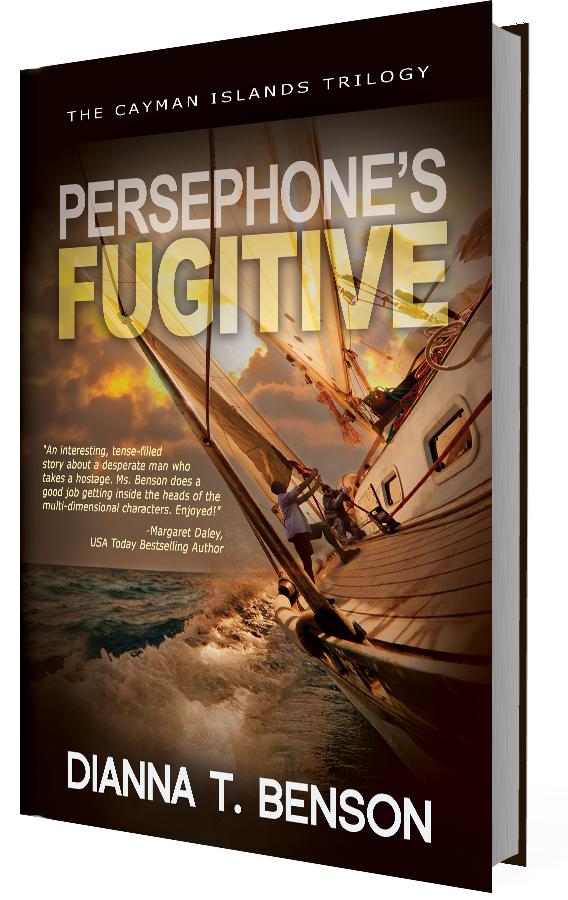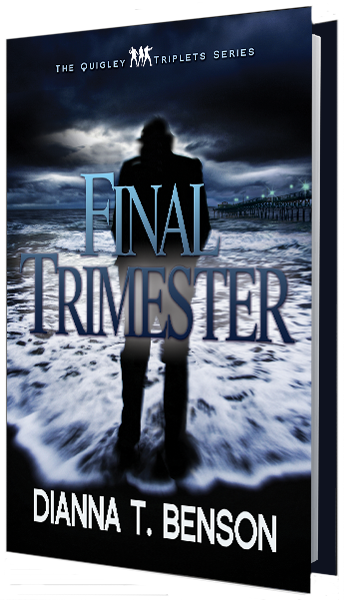Blog
EMS and Dispatch
Our resident EMS expert Dianna Benson is back discussing EMS and Dispatch for those pre-hospital scenes. Our station buzzer and waist-radios go off, dispatching us to a scene of an incident (if we’re not at our station at that moment, obviously we’d only hear our waist-radios). A split second later, a computerized voice over our station intercom says (for example): EMS 1071. Cardiac arrest at 123 Main Street. At 123 Main Street. TACH Channel 5. The same information is displayed on our radios. EMS 1071 is an ambulance number and the crew currently working the shift on that particular ambulance. Cardiac arrest is the type of EMS Call, but we may not receive this information (see below). The address is repeated once for clarity. TACH channel is the specific radio channel we need to set our radios to for this Call in order to receive any available additional information, as well as be in constant contact with various resources for several reasons – the top two reasons: 1) For our safety, and 2) To request additional resources as needed – PD (police department), LEOS (law enforcement officers), another ambulance, fire department, haz-mat team, etc. When an EMS crew receives a Call to respond to, 911-dispatch is often only able to provide us with little vital information regarding the scene. The one main piece of info we do receive, of course, is the address of the incident location. We may or may not be informed of the type of Call – cardiac arrest, respiratory distress, fall, MVC (motor vehicle collision) allergic reaction, etc., we may only receive the address. En route to the scene, we may receive additional vital pieces of information if the 911-dispatcher was able to obtain details from the 911-Caller. If so, dispatch will inform us: 1) If the patient is conscious or not, 2) If the patient is breathing or not, and 3) If PD or LEOS have been dispatched along with my crew. Any information is helpful for us to prepare for the scene we’re about to encounter, therefore enables us to best treat the patient, protect bystanders and the environment, and maintain our own safety. Unfortunately, the information given can be inaccurate or incomplete simply because 911-Callers are stressed, scared, angry, etc., and they may be a child or may be the injured or ill patient barely able to speak, plus 911-Callers are most often not medically knowledgeable. Also, 911-dispatchers are hindered via the telephone, so it’s difficult to well-interpret the situation. Sometimes a 911-Caller or another person on that end hangs up (due to multiple reasons) before the dispatcher informs them it’s okay to do so, thus very limited information is ascertained. One example of why the communication would cut off is: The 911-Caller is also the ill or injured patient, and that person falls unconscious. Can you think up more reasons? Thank you in advance for reading and for your participation and comments. If you have any questions, please do not hesitate to...
read moreTake Me First: Triage in the EMS Setting
Dianna Benson is back posting about triage in the EMS setting. Last Wednesday, I covered triage in the hospital setting. Today, will be a great opportunity to test your EMS triage skills in the comments section. I’m taking the test. How about you? Dianna will be checking in to give her expertise. Also, don’t forget, whoever leaves the most comments this months wins a prize! Mass/Multiple Casualty Incident Triage I’m FEMA certified in ICS – the Incident Command System, which is the US National emergency system. I serve in times of crisis in my local community as well as anywhere I’m needed or sent. MCI (Mass or Multiple Casualty Incident) falls under that command system. By definition, a MCI is any event that places excessive demands on personnel and equipment, and involves three or more patients. Like in a Haz-Mat situation, a small town can rapidly become overwhelmed by a MCI. Then again, even in a large metropolitan city, chaos can and does occur if there’s enough conflict – extreme weather, rush-hour traffic, an earthquake that affected most of the city, etc. Some examples of a MCI: Structure fire and/or explosion, MVC (motor vehicle collision), gang-related violence, bus rollover, tornado, flood, public shooting, etc. ICS is also used in preparatory and scene control for large crowd events like: Sporting events, concerts, a visit from the US President, etc. ICS is in place during as well as pre and post these events to handle normal activity and to deal with any emergency crisis if one or more occurs. Numerous emergency agencies are involved in handling a MCI. Together, the ICS allows us all to efficiently and effectively work together. The first EMS personnel to arrive on scene of a MCI becomes the EMS incident commander. That person sets up the following sectors: A) Mobile Command B) Extrication C) Staging D) Supply E) Treatment F) Transportation G) Triage For this post, I’ll discuss triage only. Typically, there are two phases of triage – primary and secondary. For this general explanation, assume I wasn’t the first to arrive on the scene, and when I did arrive, the EMS incident commander assigned me in triage. 1) Primary Triage: In the staging area, I suit-up in my necessary protective gear and grabequipment. I enter the hot zone of the MCI. I quickly assess each patient, one-by-one. Based on my assessment findings, I then categorize each patient by placing them in their appropriate priority status. Priority 1 – Referred to as Red, these patients need immediate care and transport to a hospital. Priority 2 – Referred to as Yellow, these patients’ conditions will tolerate a delay in emergency care and transport. Priority 3 – Referred to as Green or the walking wounded, these patients only have minor injuries and are ambulatory (able to walk under their own power). Priority 4 – Referred to as Black, these victims are either dead or they’ve suffered fatal injuries and there’s nothing anyone can do for them. Yes, it sounds cruel to leave them and move on to the next person, but these patients are unconsciousness, dead, or will soon die, and in a mass causality incident most likely we cannot save everyone, so we must save those who can be saved. After I assess a patient, I place a colored (example – Red) and named (example – Priority 1) tag on that patient, and move on...
read moreEMS Treatment of a Minor (1/2)
Mart asks: My MC is 16 yrs old. She gets hit by a truck. She has road rash. Right leg turned black and blue. Shin welled up. But other than feeling like she literally was hit by a truck, she is okay….she thinks. What would most likely occur after an incident like this? In short, how can I make it so a 16 yr old girl who has been hit by a car, stalls at home before her Mom takes her to the ER? I hope there is a way. Dianna says: A 16-year-old can accept EMS treatment and transport to a hospital. However, a 16-year-old cannot refuse treatment and/or transport – EMS has a refusal form that requires a signature from the patient, a minimum of age 18, or from a parent or legal guardian of a minor aged patient, 17-years-old or younger. EMS will not leave a patient at the scene until we obtain a signed refusal form (we wait for as long as it takes to obtain that signature). It’s not uncommon for patients to refuse an ambulance transport to avoid additional medical bills and then have someone drive them to the ED. From your scene description, it sounds like the patient was a pedestrian stuck from a truck at low speed, propelling her body in the air slightly; her leg skidded on the road, stopping her. A pedestrian struck by a moving vehicle is a serious mechanism of injury thus a high priority trauma. EMS will encourage both treatment and transport by explaining to your patient she may have internal injuries. I actually say to patients, “I don’t have x-ray vision or CT scan capabilities inside my ambulance, so I’m unable to verify if you’ve sustained internal injuries or not.” If transport is still declined, I obtain a signature of refusal from a parent or legal guardian (the uncle wouldn’t be enough). The way around this legal issue is for the MC to call her mom and EMS waits for her to arrive on scene. Was the truck driver at fault for hitting the MC? If the driver is legally at fault, then most patients tend to accept EMS treatment and transport (think law suit). Regardless of any pending law suit, I think the uncle would insist the main character be transported. Once the mom arrives on scene, I find it unbelievable (and not likeable or smart of the mom) that a mom would refuse transport to a hospital for their injured teenager struck by a moving truck as a pedestrian. That’s a serious mechanism of injury (most car accidents are minor, but being hit by a car as a pedestrian is serious). However, if you prefer to avoid an ambulance ride in your story, then write in the following: 1) Keep the injuries extremely minor – EMS finds no abnormalities beyond right lower extremity minor swelling and abrasions with slight oozing blood. 2) All her vital signs are within normal limits. 3) The patient assessment from EMS cleared C-spine immobilization (backboard and neck collar). However, since the mechanism of injury is significant, in order for those three above points to be believable, you’ll need to write in the following: 1) The truck was moving at extreme low speed (like 5 miles per hour); it’s amazing...
read moreDisaster Status Part 3/3
Another Real-Life Incident I was on-shift the night an industrial hazardous waste plant burst into flames. I obviously have all the inside information, but it won’t be released to the public, so I’m sorry to say I can’t share most of it with you. What I can say – inside the facility, stored toxic material ignited. The fire quickly grew to a plume of smoke then the entire facility erupted into a fireball with several rapid fire explosions. This swift and extreme domino of events occurred simply because the burning toxic chemicals were stored right next to oxygen cylinders, and oxygen feeds fire. You guessed it, properly stored O2 is essential. The reverse 911 system was activated – recorded messages called all nearby residents, warning them to evacuate. View the photos included here – it was an intense explosion and the burning toxic chemicals created a massive haz-mat situation. The chemicals involved in that explosion react negatively when mixed with water, so we were forced to allow the fire to burn itself out. Two days post the onset of the incident, a foam application extinguished the remaining flames. Even though this makes for boring fiction, emergency agencies that night proved pre-planning and inter-agency training and execution results in excellent emergency incident response outcome. My crew along with many other emergency crews, successfully worked the potentially deadly incident – no loss of life and only minor exposure issues occurred. But think of the endless possible dramas that could’ve happened. Thank you in advance for reading and for your participation and comments. If you have any questions, please do not hesitate to ask. Photos are courtesy of Apex Fire...
read more



